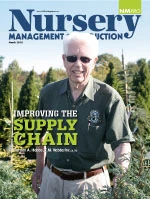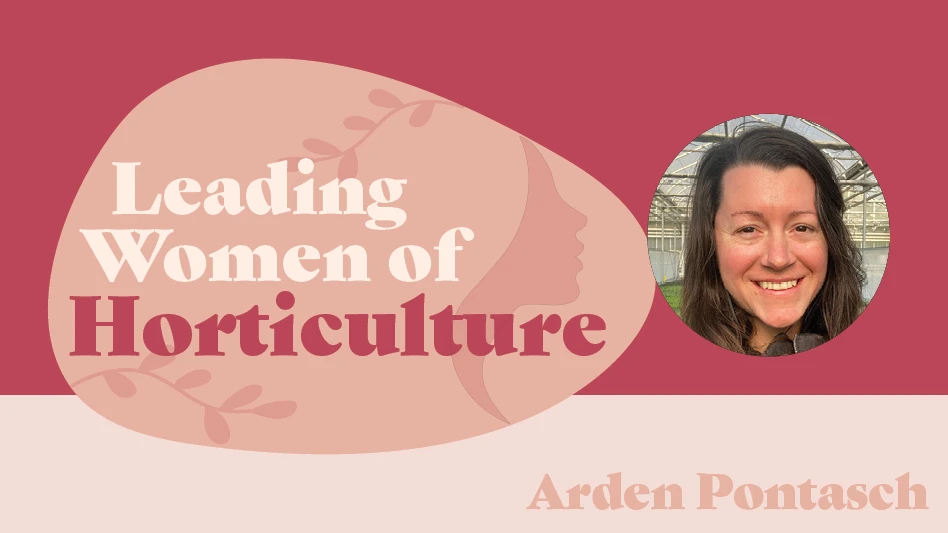|
|
Commercial growers in the U.S. face challenges associated with the economical production of quality plant material and management of persistent pest problems. To meet these challenges, growers need management strategies for floricultural and ornamental crops that not only improve resource management, but also provide more effective management of pest insects or mites.
Fertilizers are essential for producing ornamental crops of high quality, and until recently were viewed as a cheap and convenient input to maximize aesthetic quality and sales. However, over-fertilization of ornamental crops can contribute to higher pest control costs. The compounds found within fertilizers provide the raw materials that not only increase plant growth and vigor, but also enhance the nutritional qualities of plant tissue and/or sap for many plant-feeding pests.
High nutrient levels in plant tissue or sap may cause pest insects or mites to rapidly grow and multiply. Greater pest numbers cause a higher incidence of plant injury, a reduction in crop yield, and a lost of aesthetic value – and they require more insecticide or miticide applications. Frequent applications of insecticides or miticides increase production costs and contribute to phytotoxic damage, pest resistance, water contamination and worker health risks.
Fertility and pests
Given these issues, we were interested in whether fertilization practices could be adjusted to address pest management issues while maintaining product quality. Reduction of fertilization could be a useful pest management tactic if altered fertilization regimes can reduce pest populations with little loss in crop yield and productivity. Lowering fertilizer inputs is appealing because it could help to address pest issues but also reduce operational costs. We tested how the manipulation of fertilization can impact management of spider mites on roses.
Roses are widely produced in the U.S. as nursery crops, potted flowering plants or cut flowers. The twospotted spider mite (TSSM), Tetranychus urticae Koch, is a serious pest of roses and many floricultural crops. Spider mites cause direct damage to plants because they tear individual plant cells and feed on the cell’s contents. Spider mites also produce webbing that further reduces the aesthetic value of the crop. Chemical control is the preferred tactic for pest mites on greenhouse or field-grown roses, but widespread use of miticides has resulted in TSSM resistance to many products.
We tested whether fertilization could be lowered to reduce TSSM populations without adversely affecting the productivity and quality of container roses. Bare-root plants (Rosa hybrida cv. ‘Tropicana’ on ‘Dr. Huey’ rootstock) were grown in 14-liter plastic nursery containers with soilless potting mix, pine bark mulch and sand (3:1:1 by volume). Individual plants were infested with the same number of adult female TSSM at the start of our trials and the rates of increase in TSSM populations were compared among plants fertilized with different fertilization levels. We used a 15-5-15 Cal-Mag water-soluble fertilizer. The fertilizer strength was varied, but the ratio of all macro- and micro- nutrients was kept the same. Fertilization levels below and up to the recommended level (150 ppm N for constant liquid feeding of potted roses) were tested.
The results
Four weeks after the plants were infested, the numbers of TSSM and TSSM eggs were twice as high or higher on roses fertilized with 100 percent versus 33 percent or 50 percent of the recommended level. The numbers of flowering shoots and plant marketability were not compromised on plants fertilized with 50 percent of the recommended level. Total nitrogen content of leaf tissues was also within the acceptable range for rose growth even when fertilization level was reduced by 50 percent.
Fertilization may be lowered to 50 percent of the recommended level to substantially reduce TSSM numbers on container roses without compromising crop productivity or product quality. Chemical control is the preferred tactic for pest mites on greenhouse or field-grown roses, but effective suppression is difficult if the crop produces dense canopies that make good spray coverage difficult to achieve. Widespread use of miticides has also resulted in TSSM resistance to many products. Growers would need to apply fewer miticide applications if the potential severity of TSSM infestations could be mitigated by fertilization practices. Reduction of fertilizer input could also be implemented with other management tactics such as plant resistance and biological control to improve control of TSSM and reduce pesticide applications, resistance issues and environmental contamination by runoff. Most importantly, reducing both fertilizer and pesticide use should directly reduce grower costs and increase profits.
Cost savings
Based on 2008 figures provided by the Antique Rose Emporium, a 50 percent reduction in fertilizer input would yield a potential savings of up to $12,000 per year for its typical crop of 160,000 potted roses. Savings for the Antique Rose Emporium were greater than for Ran Pro Farms because both labor and fertilization costs were reduced in half by not applying a top dressing to each pot after planting.
This confirms the tremendous potential for U.S. rose growers to lower their production costs by manipulating fertilization practices.
Andrew Chow is a post-doctoral research associate; Peter Kratuer is a senior research associate; Kevin M. Heinz is a professor; and Carlos Bográn is a professor and extension specialist in the Department of Entomology at Texas A&M University. Amanda Chau was a post-doctoral research associate with Heinz and is currently a faculty member of the Division of Natural Sciences at Blinn College in Bryan, Texas. These studies were funded in part by the USDA-ARS Floriculture and Nursery Research Initiative and the Kevin M. Heinz Floriculture and Nursery Crop Entomology Endowment.
The complete results of these studies can be found in the Journal of Economic Entomology, Volume 102, Issue 5.

Explore the March 2010 Issue
Check out more from this issue and find your next story to read.
Latest from Nursery Management
- Trends: Proven Winners 2025 perennial survey shows strong demand
- Online registration opens for the 2025 Farwest Show
- Sustainabloom launches Wholesale Nickel Program to support floriculture sustainability
- Plant breeding as an art
- Society of American Florists accepting entries for 2025 Marketer of the Year Contest
- American Horticultural Society welcomes five new board members
- Get to know Christopher Brown Jr. of Lancaster Farms
- American Floral Endowment establishes Demaree Family Floriculture Advancement Fund











